Messier Monday: The King of the Leo Triplet, M66
The brightest galaxy in a spectacular close grouping of three provides a beacon of insight into our far future.
“Three can keep a secret, if two of them are dead.” -Benjamin Franklin
It still isn’t quite physically possible to peer into the far future of what’s going to happen to our galaxy, but here on Messier Monday we can come awfully close! Here in our local group, the three major galaxies — ourselves, Andromeda and the Triangulum Galaxy — are on a collision course, set to merge with one another in just a few billion years, forming a single giant elliptical galaxy in the aftermath. Well, if you know where to look, you can see a triple collision about to take place in the Messier catalogue!
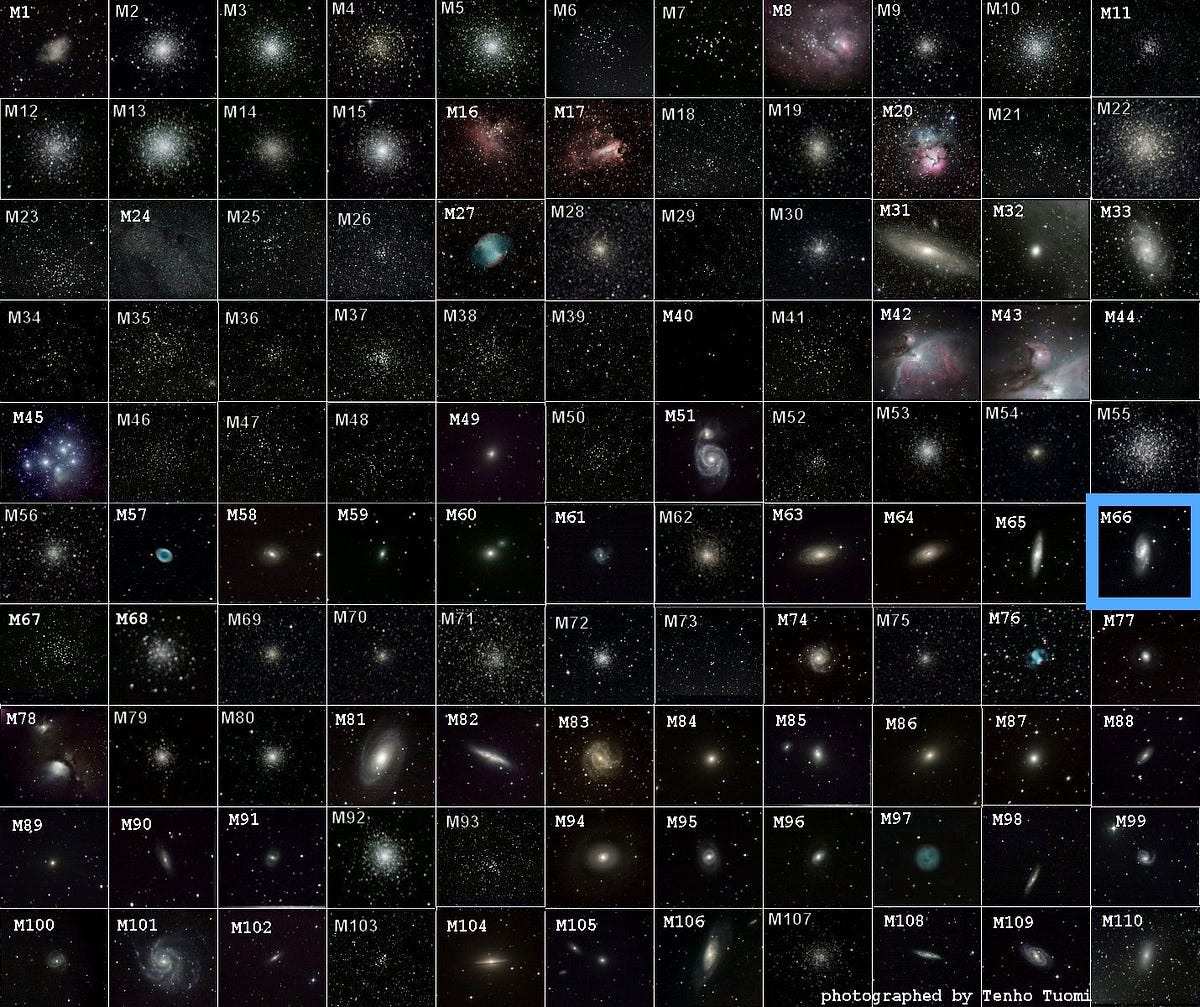
Perhaps the most famous triplet of galaxies in the entire night sky boasts two of its members in the Messier catalogue, and the full trio is just becoming visible in the early part of the night at this time of year. If you want to find the brightest galaxy within it for yourself on this mostly moonless Messier Monday, here’s where to look.
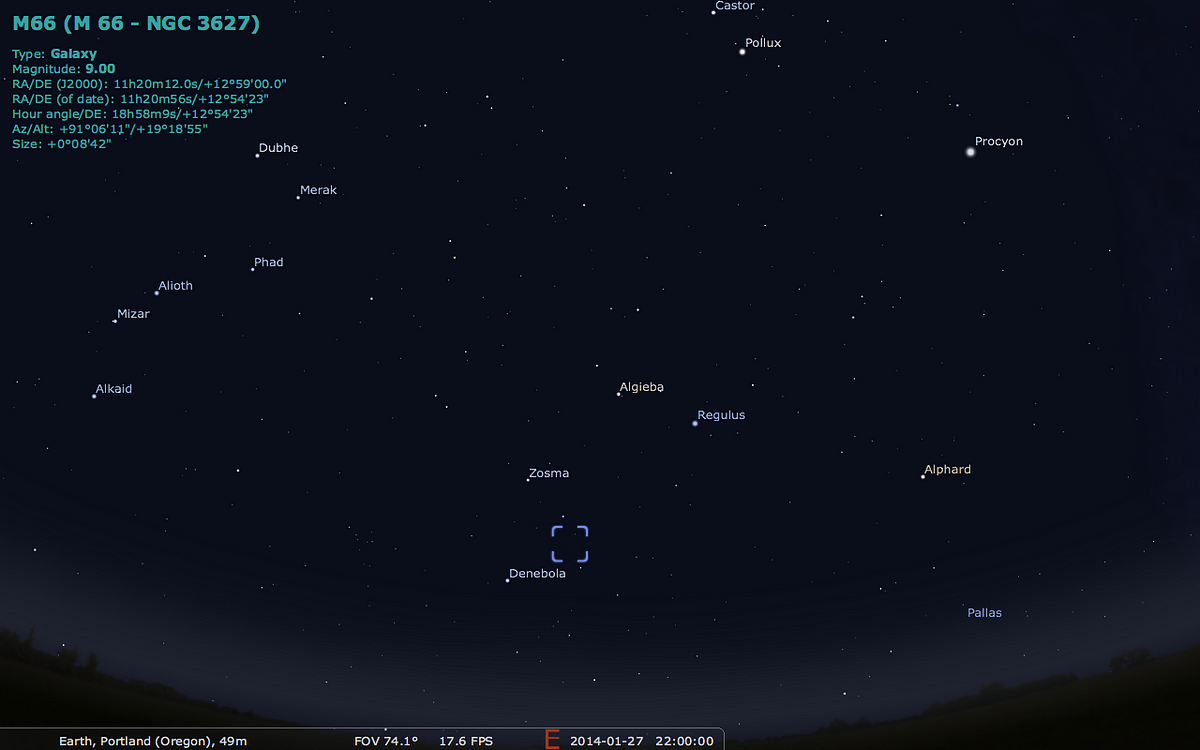
After sunset tonight, you can find the highly recognizable Big Dipper in the northeast part of the sky, while Orion rises high in the south/southeast. But in between them, a little closer to the horizon, the bright stars of the constellation Leo stand out against the black backdrop of night. And while Leo’s brightest star, Regulus, isn’t much help, its second brightest one is.
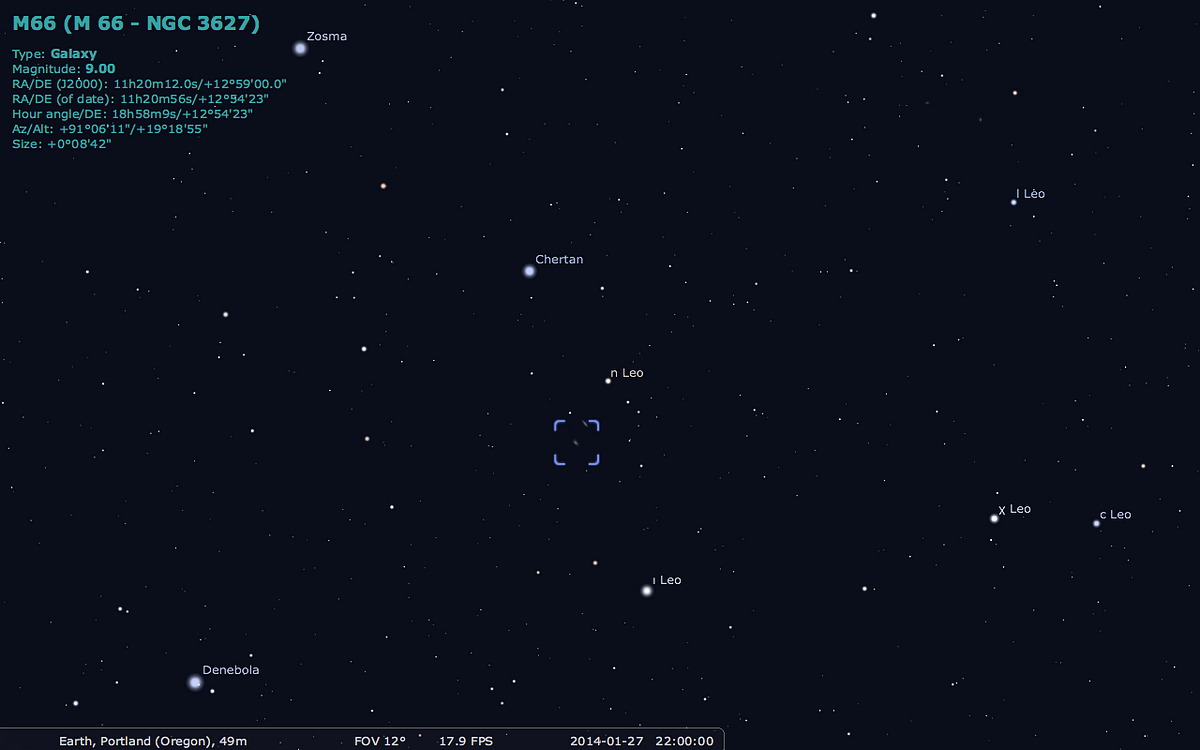
Denebola, at the opposite end of Leo from Regulus, also has the prominent naked-eye stars Zosma, Chertan and ι Leonis nearby, forming a slightly curved line. If you point either an excellent pair of binoculars or any sized telescope halfway between Chertan and ι Leonis, you’re going to be in for a treat. If you need a little extra guidance, the dimmer (but still naked-eye) star 73 Leonis (n Leo, above/below) can help point the way to Messier 66.
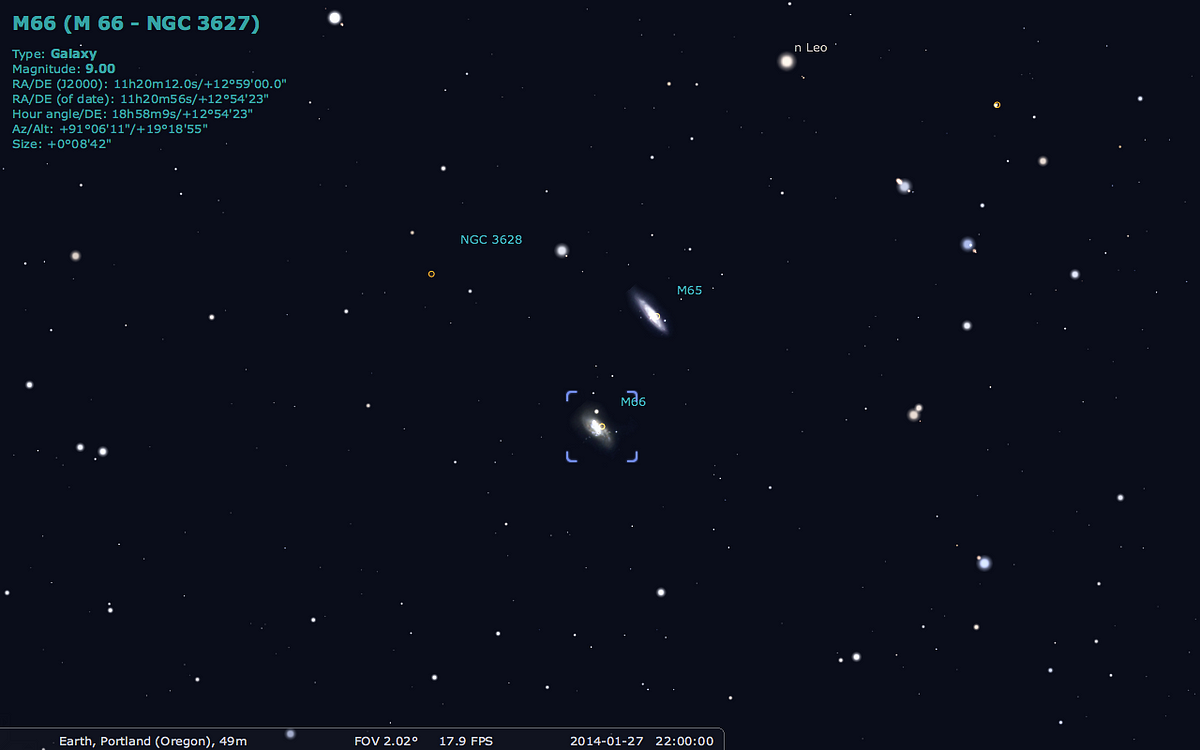
Because there’s a really good chance that if you can see Messier 66 — the brightest of the three galaxies in the Leo Triplet — you’re going to be able to see all three! Here’s what they might look like through modest (by today’s standards) equipment.
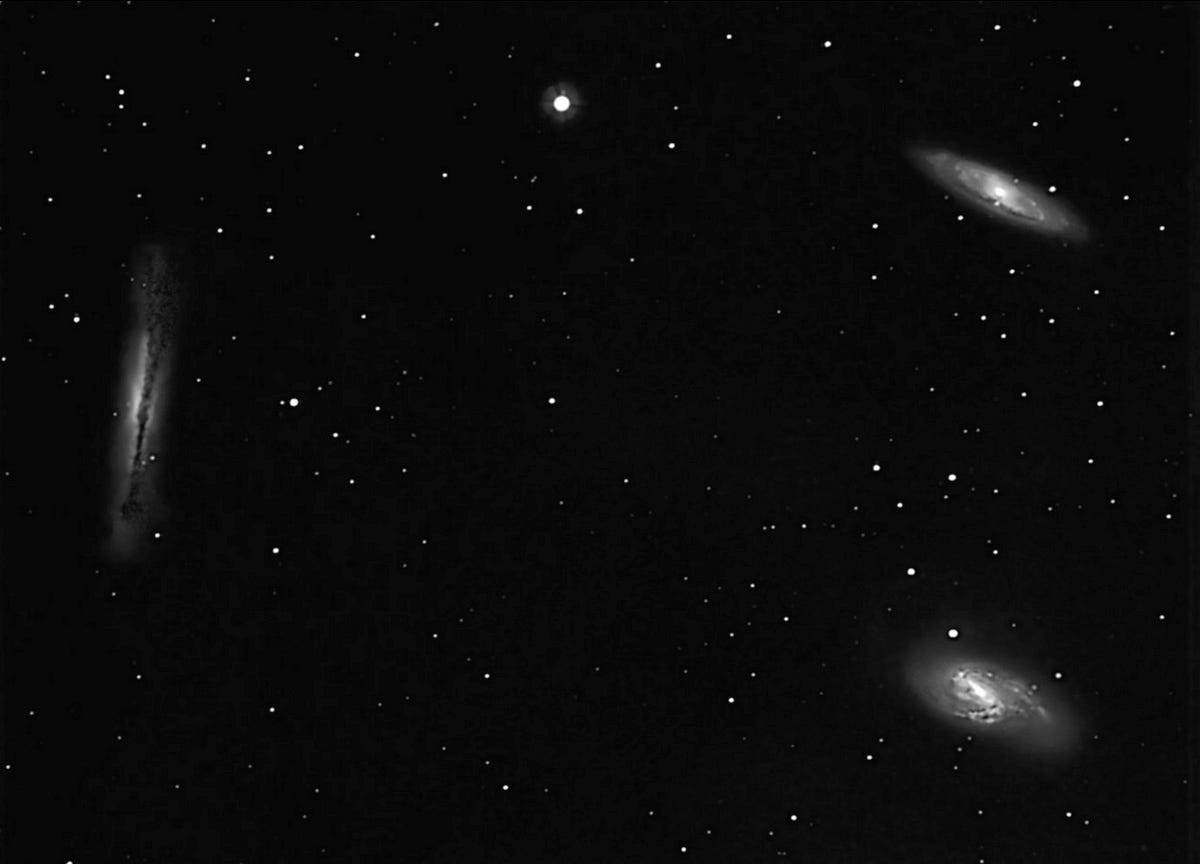
Messier 66 — at the lower right — is the brightest, while the slightly dimmer Messier 65 shines above it and the edge-on NGC 3628, with a tidal tail some 300,000 light-years long, is just dim enough that it was never caught by Messier or his collaborators. Discovered in 1780, Messier was clearly upset at having missed it seven years earlier, saying:
Nebula discovered in Leo; its light is very faint & it is very close to the preceding [M65]: They both appear in the same field [of view] in the refractor. The comet of 1773 & 1774 has passed between these two nebulae on November 1 to 2, 1773. M. Messier didn’t see them at that time, no doubt, because of the light of the comet.
Yet now that the comet is out of the way, you can see that Messier 66 is no ordinary galaxy.
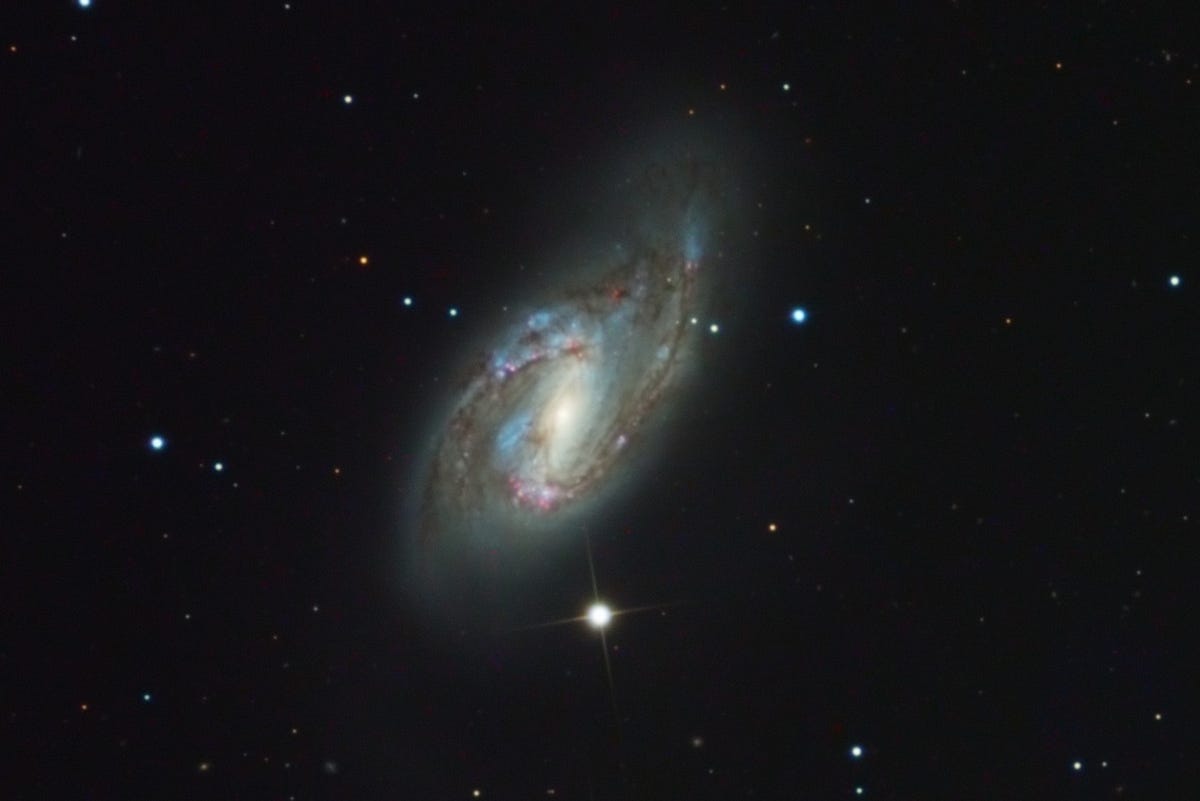
This is a highly disrupted galaxy, as you can tell from its unusually shaped spiral arms, it’s asymmetrical but very prominent dust lanes, and the bright bursts of star formation occurring in various regions, highlighted in pink.
As such, this is one of the best galaxies for astrophotography under outstanding dark skies.
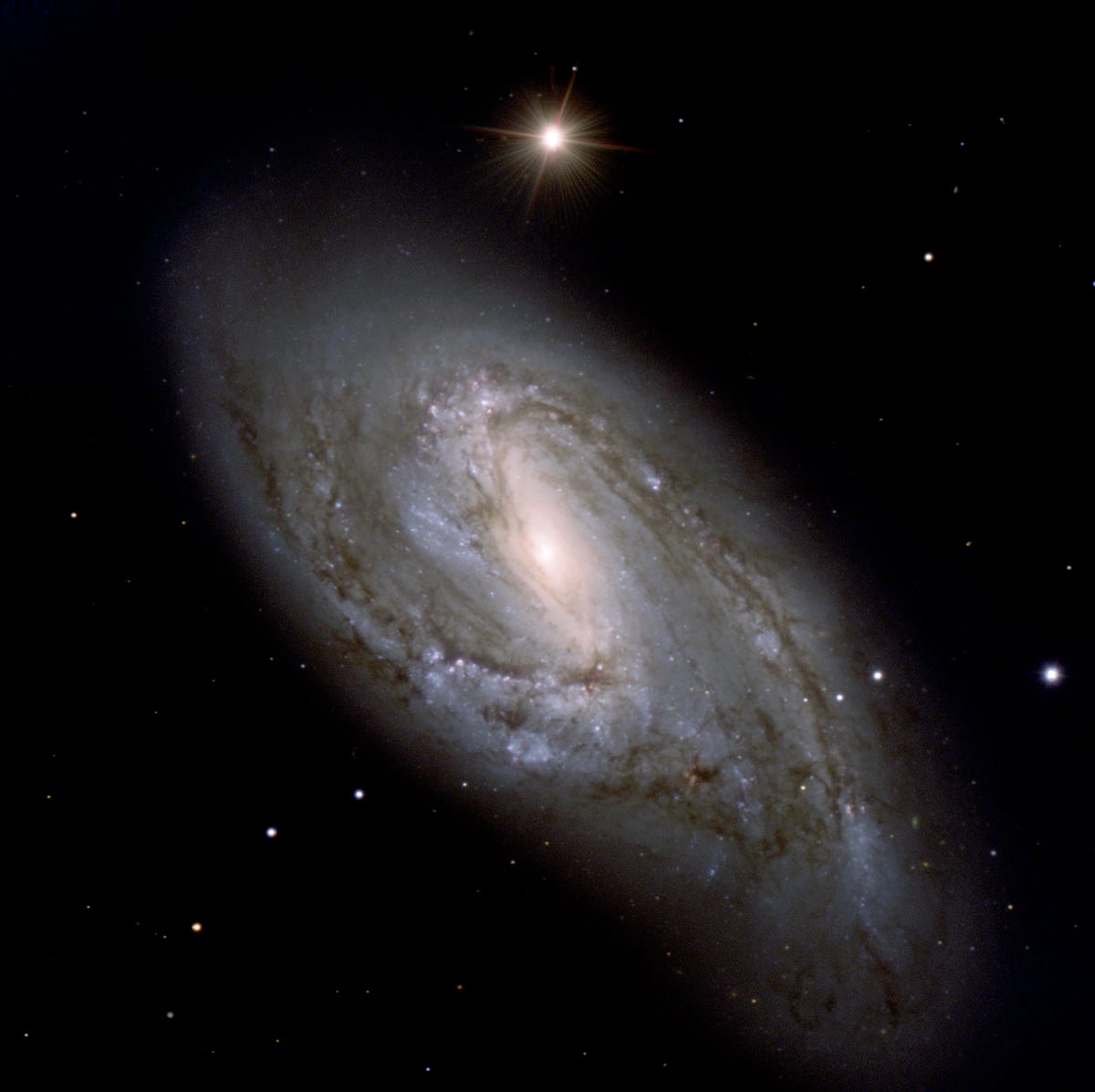
This galaxy is very comparable in size to our Milky Way, at around 95,000 light-years in diameter. Although unlike our Milky Way, the reason for its disrupted structure is a recent gravitational encounter with the faintest member of the Leo Triplet, NGC 3628! If we look in the infrared, we can really see how different sections of this galaxy differ in their star-formation rates.
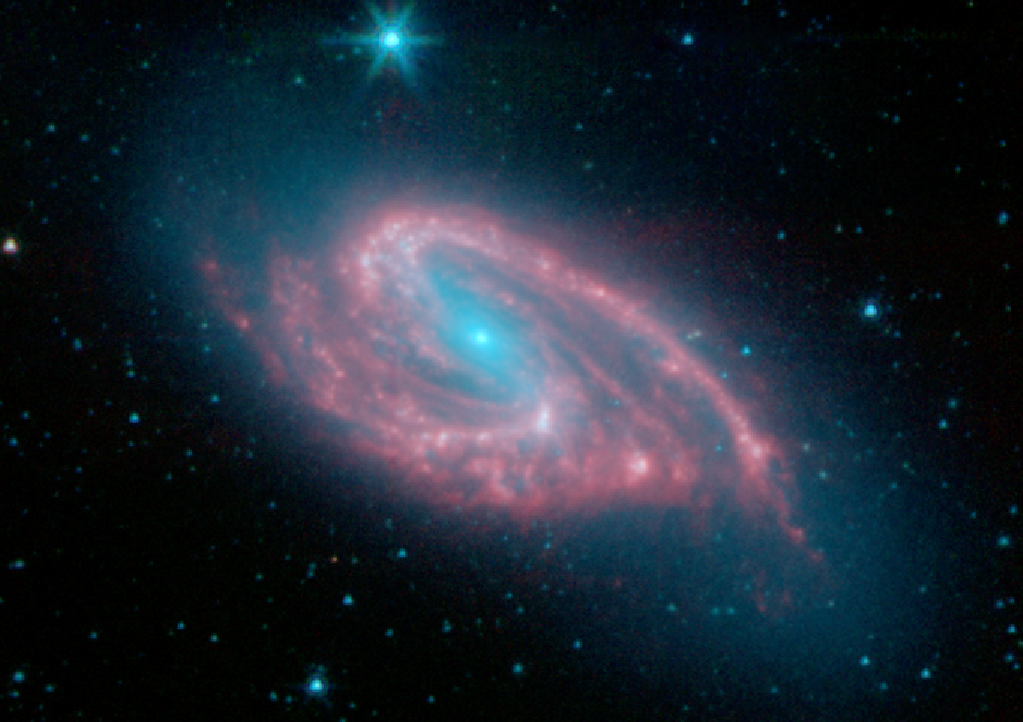
Interestingly enough, X-ray studies of the galaxy shows a number of black hole candidates, including a supermassive one at the center! It’s by looking in the X-ray that we’ve been able to determine a very large majority of galaxies have supermassive black holes at their center, and in M66’s case, that’s the only way to find it due to the incredibly bright central bulge.
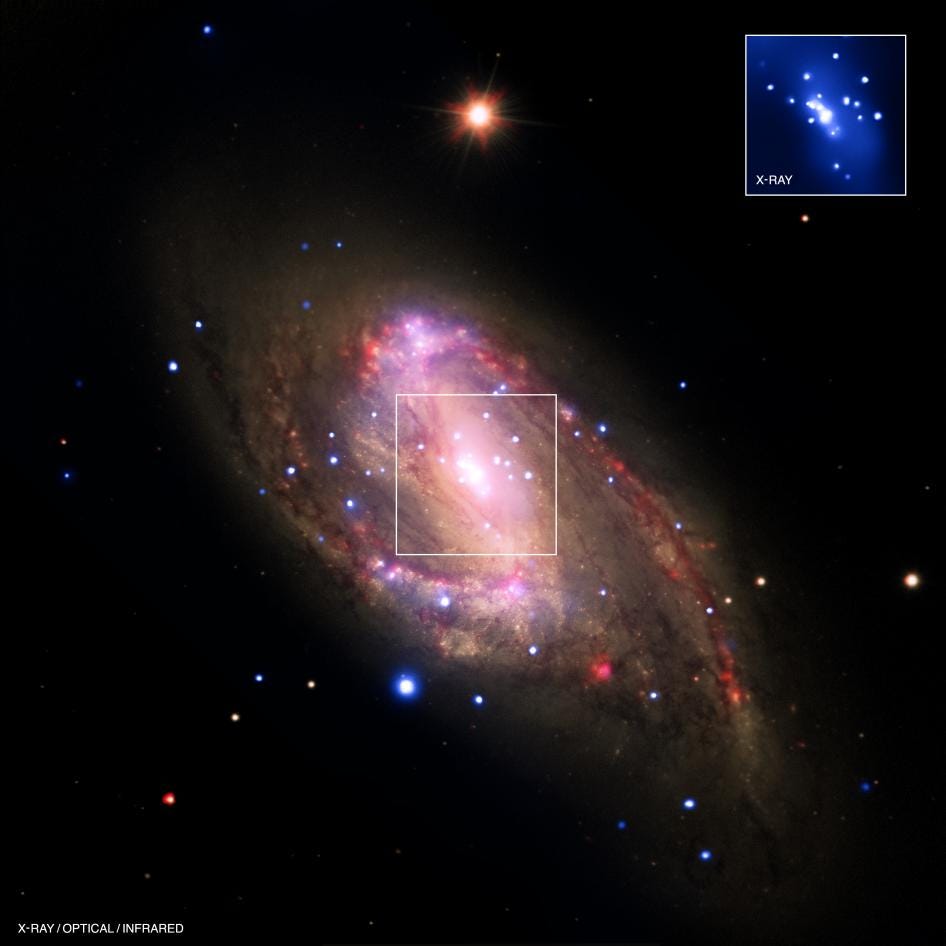
Even in monochromatic imaging, Messier 66 is an incredibly impressive sight. At 36 million light-years away, it’s well on its way to becoming a giant elliptical galaxy, and the jury is still out as to whether it’s bound to either the Leo I (M96) group or the full Virgo cluster.
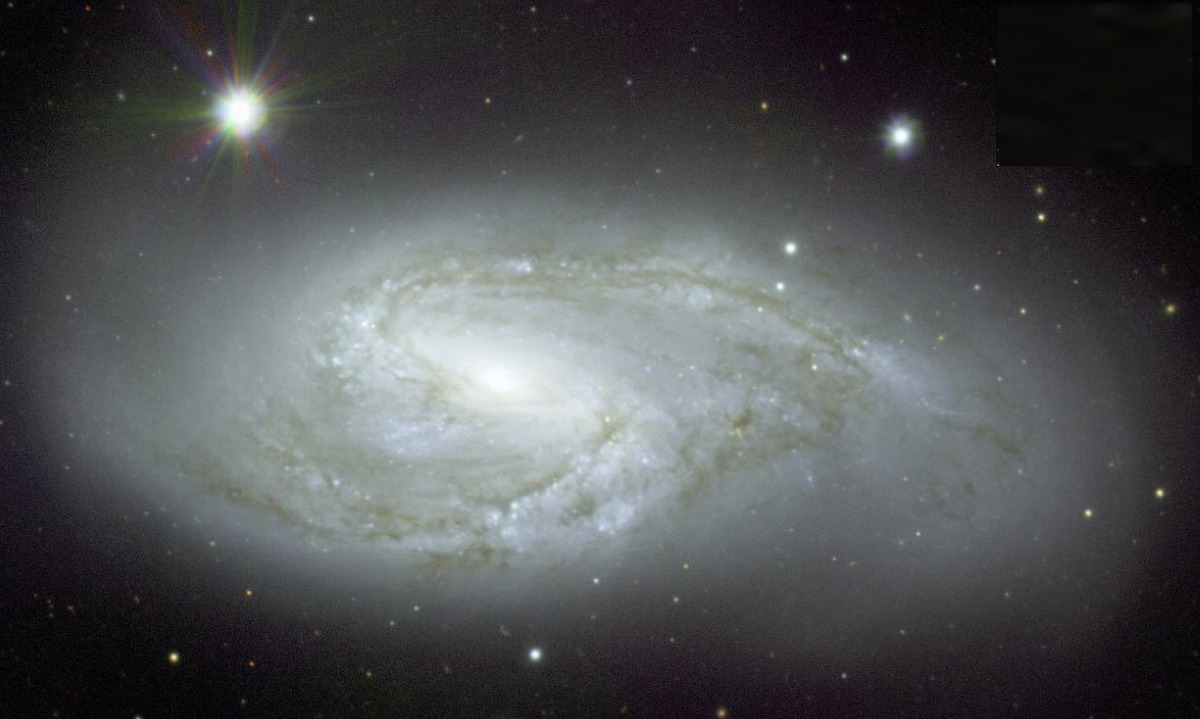
Based on what we’ve seen up until this point, however, it’s probably not bound to either of those structures. Instead, the other major galaxies in its group will someday merge with it, creating a giant elliptical and destroying the beautiful spiral structure in each of these three galaxies. The beautiful tidal tail from NGC 3628 — highlighted below — is the greatest piece of evidence that M66 and its neighbor have already interacted once, and when that happens, galaxies pretty much always wind up merging together!
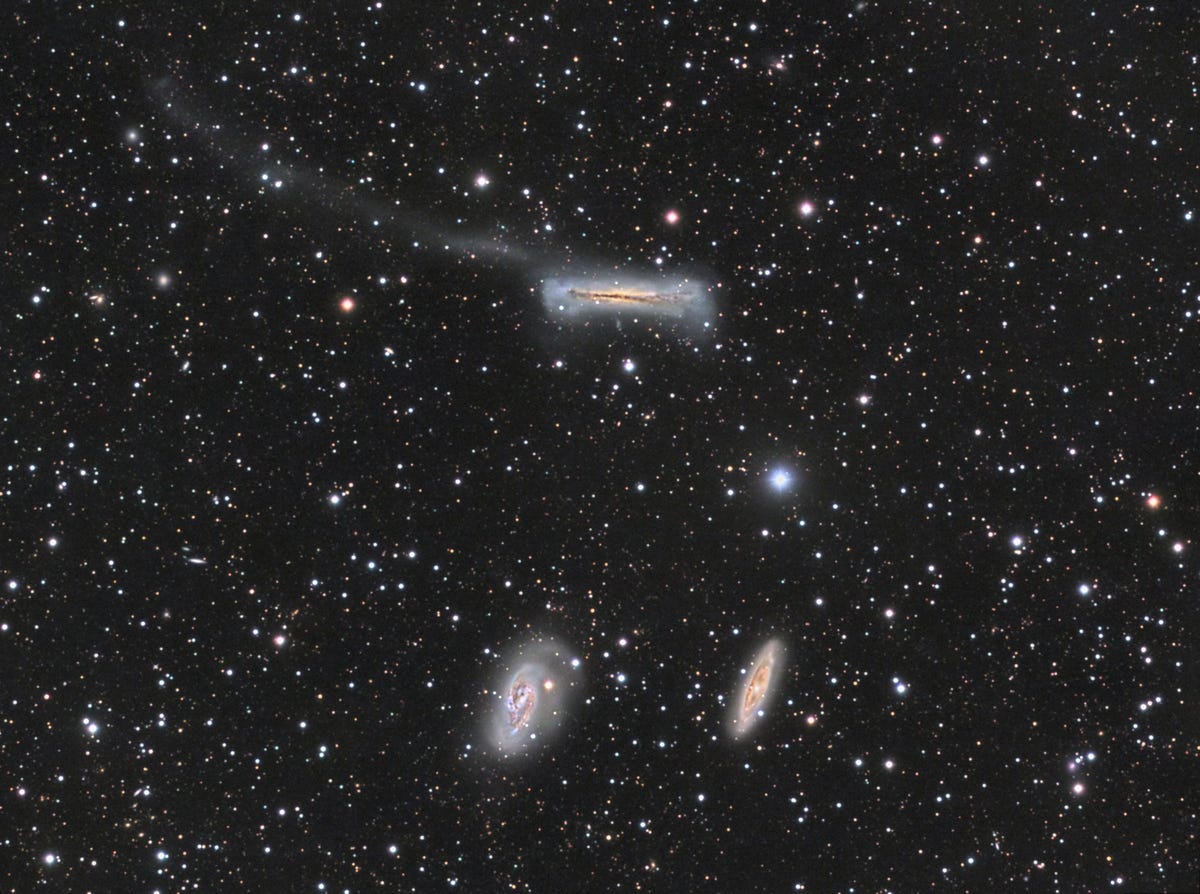
As is pretty much always the case (when available), the most spectacular imaging of this Messier object comes courtesy of the Hubble Space Telescope, which grabbed a significant chunk of this wondrous, irregular galaxy just a few years ago.
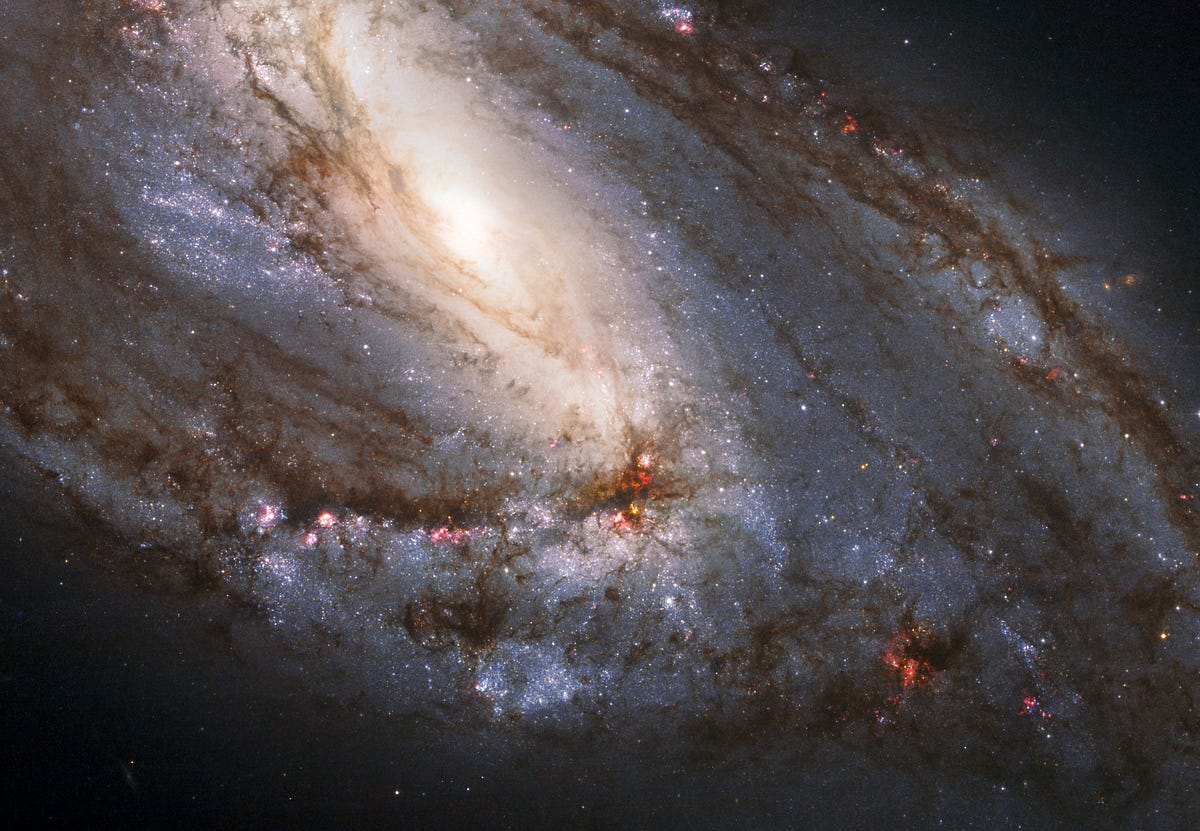
Of course, I couldn’t resist rotating this image and taking a slice through it, showcasing the most spectacular section to you in the original, full resolution! Enjoy these views while you can, because the spiral structure, the dust lanes and the new star-forming regions won’t be around for much longer, at least on galactic timescales!

And that’s the best way to end a Messier Monday! If you want to catch them all (you know you do), here are the objects we’ve covered so far, and scroll to the end for a hint as to next week’s choice:
- M1, The Crab Nebula: October 22, 2012
- M2, Messier’s First Globular Cluster: June 17, 2013
- M5, A Hyper-Smooth Globular Cluster: May 20, 2013
- M7, The Most Southerly Messier Object: July 8, 2013
- M8, The Lagoon Nebula: November 5, 2012
- M11, The Wild Duck Cluster: September 9, 2013
- M12, The Top-Heavy Gumball Globular: August 26, 2013
- M13, The Great Globular Cluster in Hercules: December 31, 2012
- M15, An Ancient Globular Cluster: November 12, 2012
- M18, A Well-Hidden, Young Star Cluster: August 5, 2013
- M20, The Youngest Star-Forming Region, The Trifid Nebula: May 6, 2013
- M21, A Baby Open Cluster in the Galactic Plane: June 24, 2013
- M25, A Dusty Open Cluster for Everyone: April 8, 2013
- M29, A Young Open Cluster in the Summer Triangle: June 3, 2013
- M30, A Straggling Globular Cluster: November 26, 2012
- M31, Andromeda, the Object that Opened Up the Universe: September 2, 2013
- M32, The Smallest Messier Galaxy: November 4, 2013
- M33, The Triangulum Galaxy: February 25, 2013
- M34, A Bright, Close Delight of the Winter Skies: October 14, 2013
- M36, A High-Flying Cluster in the Winter Skies: November 18, 2013
- M37, A Rich Open Star Cluster: December 3, 2012
- M38, A Real-Life Pi-in-the-Sky Cluster: April 29, 2013
- M39, The Closest Messier Original: November 11, 2013
- M40, Messier’s Greatest Mistake: April 1, 2013
- M41, The Dog Star’s Secret Neighbor: January 7, 2013
- M44, The Beehive Cluster / Praesepe: December 24, 2012
- M45, The Pleiades: October 29, 2012
- M46, The ‘Little Sister’ Cluster: December 23, 2013
- M47, A Big, Blue, Bright Baby Cluster: December 16, 2013
- M48, A Lost-and-Found Star Cluster: February 11, 2013
- M50, Brilliant Stars for a Winter’s Night: December 2, 2013
- M51, The Whirlpool Galaxy: April 15th, 2013
- M52, A Star Cluster on the Bubble: March 4, 2013
- M53, The Most Northern Galactic Globular: February 18, 2013
- M56, The Methuselah of Messier Objects: August 12, 2013
- M57, The Ring Nebula: July 1, 2013
- M60, The Gateway Galaxy to Virgo: February 4, 2013
- M63, The Sunflower Galaxy: January 6, 2014
- M65, The First Messier Supernova of 2013: March 25, 2013
- M66, The King of the Leo Triplet: January 27, 2014
- M67, Messier’s Oldest Open Cluster: January 14, 2013
- M71, A Very Unusual Globular Cluster: July 15, 2013
- M72, A Diffuse, Distant Globular at the End-of-the-Marathon: March 18, 2013
- M73, A Four-Star Controversy Resolved: October 21, 2013
- M74, The Phantom Galaxy at the Beginning-of-the-Marathon: March 11, 2013
- M75, The Most Concentrated Messier Globular: September 23, 2013
- M77, A Secretly Active Spiral Galaxy: October 7, 2013
- M78, A Reflection Nebula: December 10, 2012
- M79, A Cluster Beyond Our Galaxy: November 25, 2013
- M81, Bode’s Galaxy: November 19, 2012
- M82, The Cigar Galaxy: May 13, 2013
- M83, The Southern Pinwheel Galaxy, January 21, 2013
- M86, The Most Blueshifted Messier Object, June 10, 2013
- M92, The Second Greatest Globular in Hercules, April 22, 2013
- M93, Messier’s Last Original Open Cluster, January 13, 2014
- M94, A double-ringed mystery galaxy, August 19, 2013
- M95, A Barred Spiral Eye Gazing At Us, January 20, 2014
- M96, A Galactic Highlight to Ring in the New Year, December 30, 2013
- M97, The Owl Nebula, January 28, 2013
- M99, The Great Pinwheel of Virgo, July 29, 2013
- M101, The Pinwheel Galaxy, October 28, 2013
- M102, A Great Galactic Controversy: December 17, 2012
- M103, The Last ‘Original’ Object: September 16, 2013
- M104, The Sombrero Galaxy: May 27, 2013
- M106, A Spiral with an Active Black Hole: December 9, 2013
- M108, A Galactic Sliver in the Big Dipper: July 22, 2013
- M109, The Farthest Messier Spiral: September 30, 2013
Come back and join us next week, where we take on perhaps the single most amazing object in the entire Messier catalogue! (And if you want to venture your guess as to what that might be, leave it here.)





